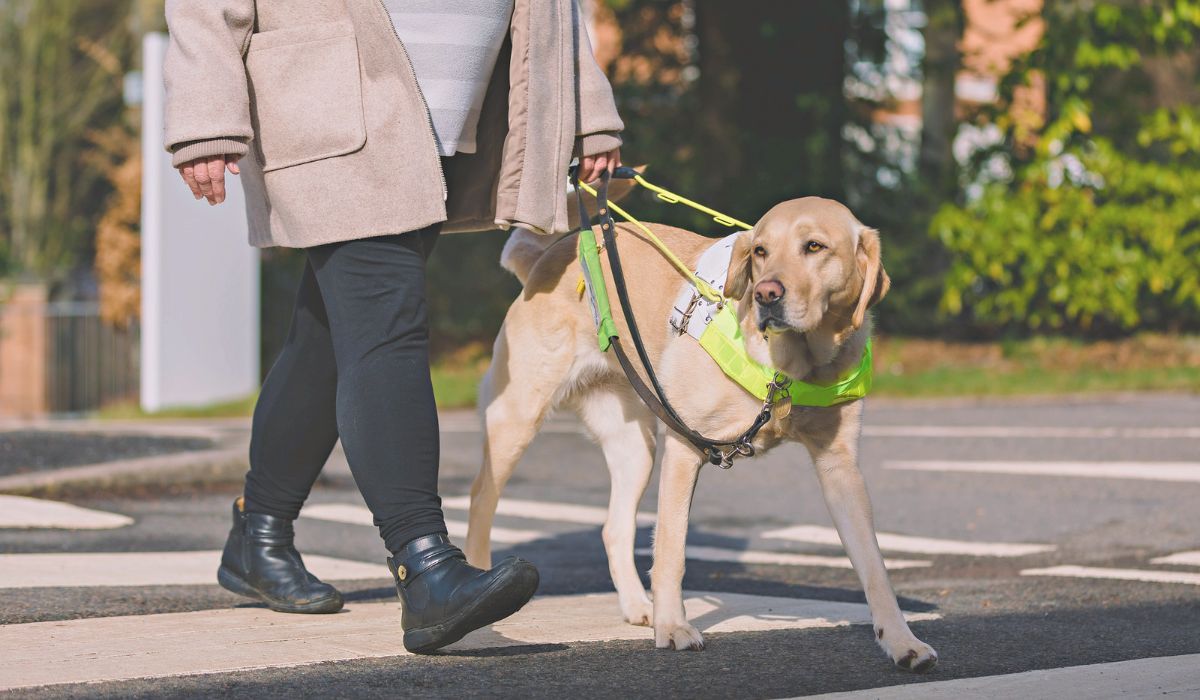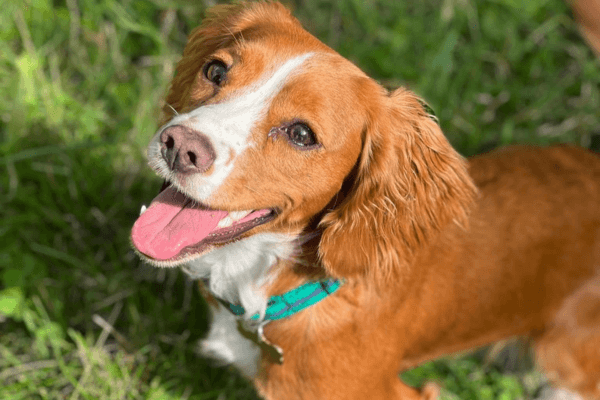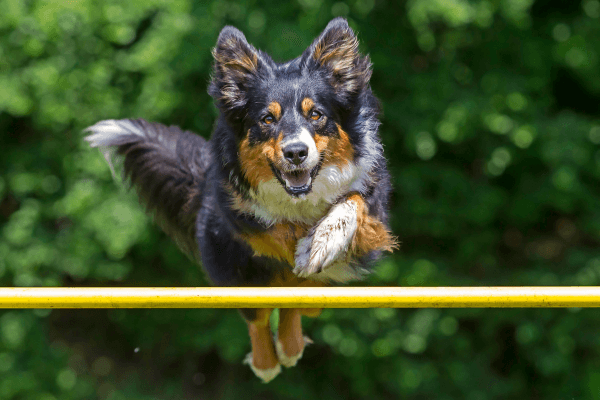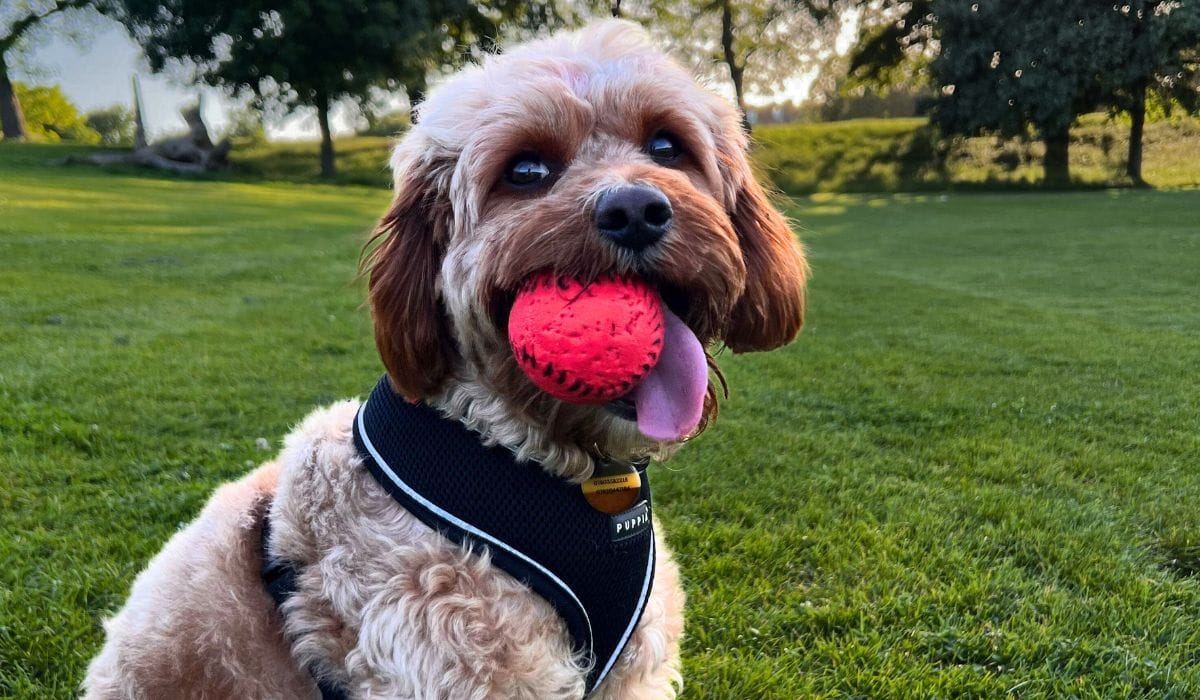What are service/assistance dogs?
Assistance dogs help thousands of people every day to perform tasks that so many of us take for granted! These dogs can support with so many different tasks for those with reduced vision, hearing difficulties, diabetes, epilepsy, autism, physical mobility challenges and more!
How can you recognise a service/assistance dog?
There are different types of assistance dogs in the UK, with Assistance Dogs UK accrediting seven of them. Most assistance dogs have a distinctive jacket or harness, so here are what some of our wonderful service pooches wear so you can identify them:
The Guide Dogs for the Blind Association -
You can identify a guide dog from their distinctive white working harness with yellow reflectors and tags on their collar. Puppies in training will usually wear a blue jacket with Guide dog puppy in training on it, and a reflective yellow wrap on their lead. A red and white flash on a guide dog harness means their owner has both hearing and sight loss.
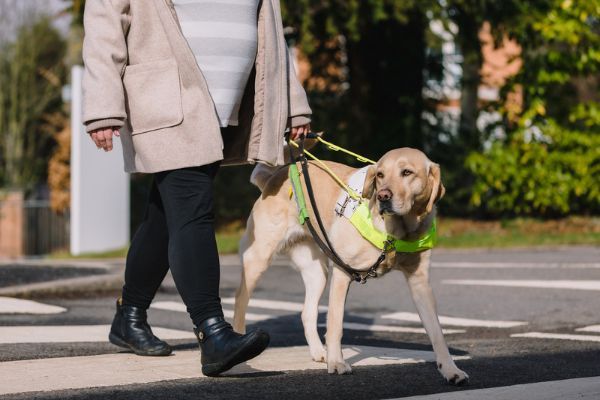
Hearing Dogs for Deaf People -
Hearing dogs are usually Labradors, Cocker Spaniels, Miniature Poodles and Cockapoos. They wear a burgundy coloured coat with “Hearing Dog” written on it.
Dogs for Good -
Dogs for Good support people with physical disabilities and children with autism. They wear green jackets.
Canine Partners -
Canine Partners support physically disabled adults, and these pooches wear purple jackets with Canine Partners written on them.
Dog A.I.D. -
Dog Assistance in Disability support physically disabled adults and they wear red jackets with yellow on their back, with the Dog A.I.D logo on the side.
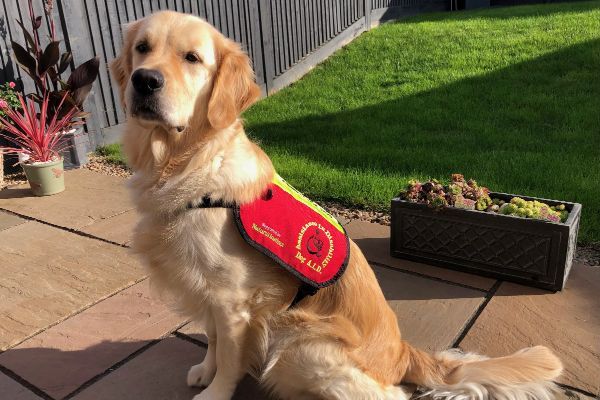
If they are in training the yellow is on the side and the red on their back.
Support Dogs -
Support dogs help an array of different people including physically disabled adults, people with epilepsy and children with autism. They wear blue jackets, with Support Dogs written on the side. Puppies wear a similar version, but with puppy in training on the side as well as Support Dogs.
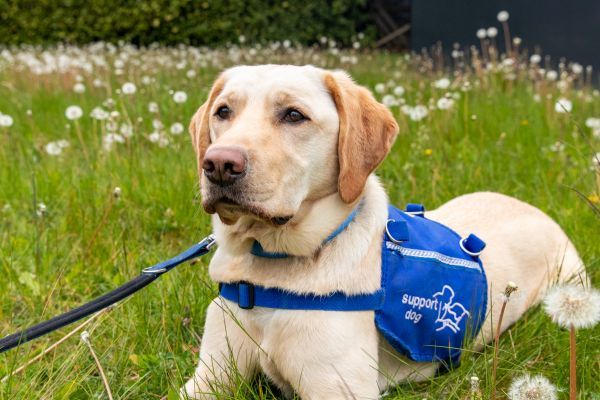
See our story of a day in the life of Support Dog Biscuit!
Medical Detection Dogs -
Medical alert detection dogs can be trained to detect early signs of serious health issues for those with epilepsy, severe allergies, Addison’s disease etc. They wear red jackets with Medical Detection Dogs on the side.
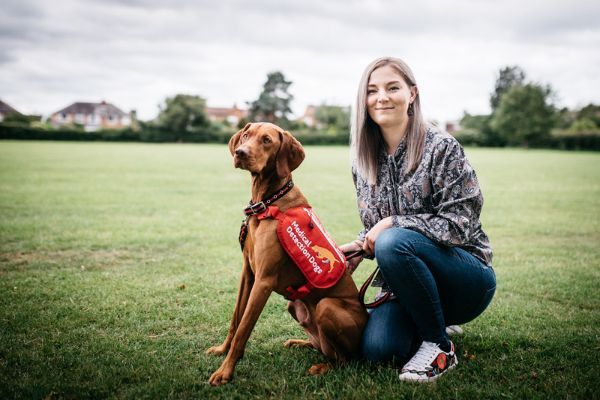
Why can’t you pet a service/assistance dog whilst they’re working or in training?
When assistance dogs are working they are focusing on their task, so we asked our friends at some pawsome UK service dog charities why you can’t pat a service dog.
Advice from our pals at Guide Dogs:
We know people think our guide dogs are adorable, but it’s really important that members of the public don’t pet or talk to them when they are out working with their owners. Distracting a guide dog can be dangerous, as they may lose focus on guiding their owner safely, and this could lead to their owner getting lost or even falling and hurting themselves. So we say ‘Don’t Dive on the Dog’, and let our guide dogs concentrate. You can certainly approach a guide dog owner if you think they need help though – a sign that they may be lost is that they have placed the guide dog’s harness handle down on the dog’s back.
Support Dogs Fundraising Manager, Danny says:
The most important thing about this is to always ask first. Whether it is a working assistance dog, one in training or a pet dog, you should always ask first.
With regard specifically to assistance dogs - the dog will be working and so may be in the middle of performing a task for the client. This could be alerting them before a seizure, helping with their stability or mobility or of course guiding them around a busy environment. It might not always be obvious that they are performing a task. Uninvited approaches by strangers can be at best a distraction for the dog and client, potentially leading them to stop carrying out that task. At worst, the dog or client may find a stranger suddenly greeting their dog to be frightening or upsetting. If this happens on a repeated basis then this can have a longer-term impact on the confidence of the dog or the client when going out, stopping them from performing the tasks they have been trained for.
However, an assistance dog can also be a welcomed opportunity for assistance owners to be part of the community and meet and speak with new people. Disability is so often linked with isolation, with 65% of the public saying they are less likely to speak to someone if they have a disability. An assistance dog can help break down barriers and provide a valuable tool in creating friendships within the local community. If people ask before approaching an assistance dog, often our service user will be happy to introduce their dog to them and talk about the support they provide to them.
Gemma at Medical Detection Dogs tells us:
Medical Detection Dogs need to focus on their human and by saying hello you may interrupt their work. Please ask if it’s okay to say hello and/or give them a treat, but don’t be too disappointed if it’s not appropriate. Some MDD clients may not appear unwell, and only the dogs are clever enough to know what is happening.
If you see a person with a Medical Alert Assistance Dog sitting on the floor or in a wheelchair looking unwell then you could ask them if they need help, or they may have a keyring on the dog’s coat saying where to look for information about what to do or how to help. Be aware this could be during a period of sudden unwellness, so please don’t expect a long conversation as they may want to be left alone.
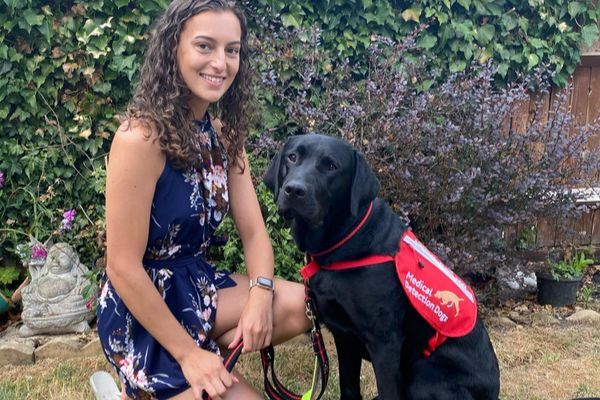
Facebook @Medical Detection Dogs
Twitter @MedDetectDogs
Instagram @medicaldetectiondogs
Dog A.I.D. Community Support Officer Laura told us more about approaching a Dog A.I.D. dog:
One really important thing to remember when you see an Assistance Dog is that they are working to assist their owners and need to be focused to help make life changing decisions and perform task work so, they must never be distracted or approached without permission from the handler. The best thing to do if you’d like to learn more about the work they are doing, speak to the owner politely and ask all about the dog!
Assistance Dogs should not be stroked or called over as this will distract them from their job. There are many different Assistance Dogs, trained for varied disabilities and all wear different jackets with their title on! Learning these can help identify which charity they are from and what brilliant work they are doing!
We all know assistance dogs are pawsome, and we’d love to give them a cuddle, but just be sure to give them the space they need to do their work. If you’re not sure if their owner needs some help, be sure to ask them and never grab a dog or a lead without permission.
At BorrowMyDoggy we’d like to give High Paws to all the wagnificent assistance dogs out there, and the pawsome charities who support them!
